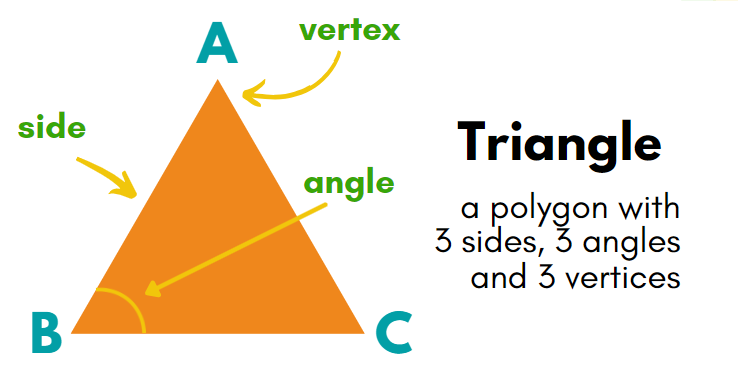Triangles are fascinating shapes that have intrigued mathematicians for centuries. As a school learner, you’ve likely come across triangles in your math classes. But do you truly understand the nuances of each type? Let’s journey into the diverse world of triangles and uncover the intricacies of each type.
1. Right Triangle
The right triangle, as the name suggests, contains a right angle (90°). The longest side of a right triangle, opposite the right angle, is known as the hypotenuse. The two other sides are called the legs. The famous Pythagorean Theorem states that in a right triangle, the square of the length of the hypotenuse (c) is equal to the sum of the squares of the lengths of the legs (a and b). This is written as
2. Acute Triangle
All three angles of an acute triangle are less than 90°. This means that every angle in this triangle is, you guessed it, acute! No angle is straight or obtuse, making it a shape that appears “sharp” at all its corners. Visually, acute triangles seem to be “leaning” rather than standing straight up.
3. Obtuse Triangle
The obtuse triangle gets its name because it contains one angle greater than 90°, which is obtuse. The side opposite this obtuse angle is always the longest side of the triangle. The other two angles, in contrast, are acute. Remember, the sum of all internal angles in any triangle is always 180°. So, if one angle is obtuse, the other two must be smaller to ensure the sum remains the same.
4. Equilateral Triangle
Equilateral triangles are the perfectionists of the triangle world. All three sides are of equal length, and all three angles are equal, each being 60°. Because of this symmetry, equilateral triangles are considered one of the most balanced and aesthetically pleasing shapes in geometry.
5. Isosceles Triangle
The isosceles triangle is a bit of a mix when it comes to symmetry. It has two sides of equal length, and the angles opposite these equal sides are also equal. The third side, however, can be of a different length. The beauty of the isosceles triangle lies in its semi-symmetry, which can be found in various structures and designs due to its stability.
6. Scalene Triangle
The scalene triangle is the rebel of the triangle family. All its sides and all its angles are of different lengths and sizes, respectively. While it lacks the symmetrical beauty of the equilateral or isosceles triangles, the scalene triangle represents diversity and variety. It’s a reminder that not everything needs to be uniform to fit in.
Why Understanding Triangles Matters
Triangles, in their various forms, have immense practical applications. Engineers and architects use the principles of triangles to design stable structures, from bridges to skyscrapers. Artists and designers utilize triangle types to create visual interest and balance in their works. Moreover, the principles governing triangles form the bedrock of trigonometry, a branch of mathematics that plays a crucial role in various scientific endeavors.
In Conclusion
Triangles are more than just shapes in your geometry textbook. They are foundational structures in the world around us. From the symmetry of an equilateral triangle to the diverse sides and angles of a scalene, each type has its own story and significance. As you progress in your studies, you’ll find that a deep understanding of these basic shapes can open doors to more advanced mathematical and scientific concepts. So, next time you come across a triangle, take a moment to appreciate its form and the rich geometric history it carries.
Kinds of Triangles



